Mastering the Master Suite
Throughout our homes, each space can serve an endless variety of purposes. A living room is a place of comfort, of entertainment, of lazy Sunday mornings; a bathroom a place of rejuvenation, of contemplation, of preparation. The kitchen becomes a headquarters, the pantry a kid’s clubhouse, and the other way around. On the weekdays, one is an area of hectic rushes and piles of refuse – and on the weekends, sparkling to perfection for the best parties around. But there is one space that remains unchanging, timeless in purpose and quintessential in essence: the master suite. From the sprawls of Versailles to the stories of the Plaza, master suites serve as the foundation of a home’s inner life. It is where we start and end our day. Yet while their purpose may be unchanging, they are often forgotten in renovations, an afterthought to a house’s interior design; and a bit of change within that space may be all you need to redesign the experience of your day to day life.
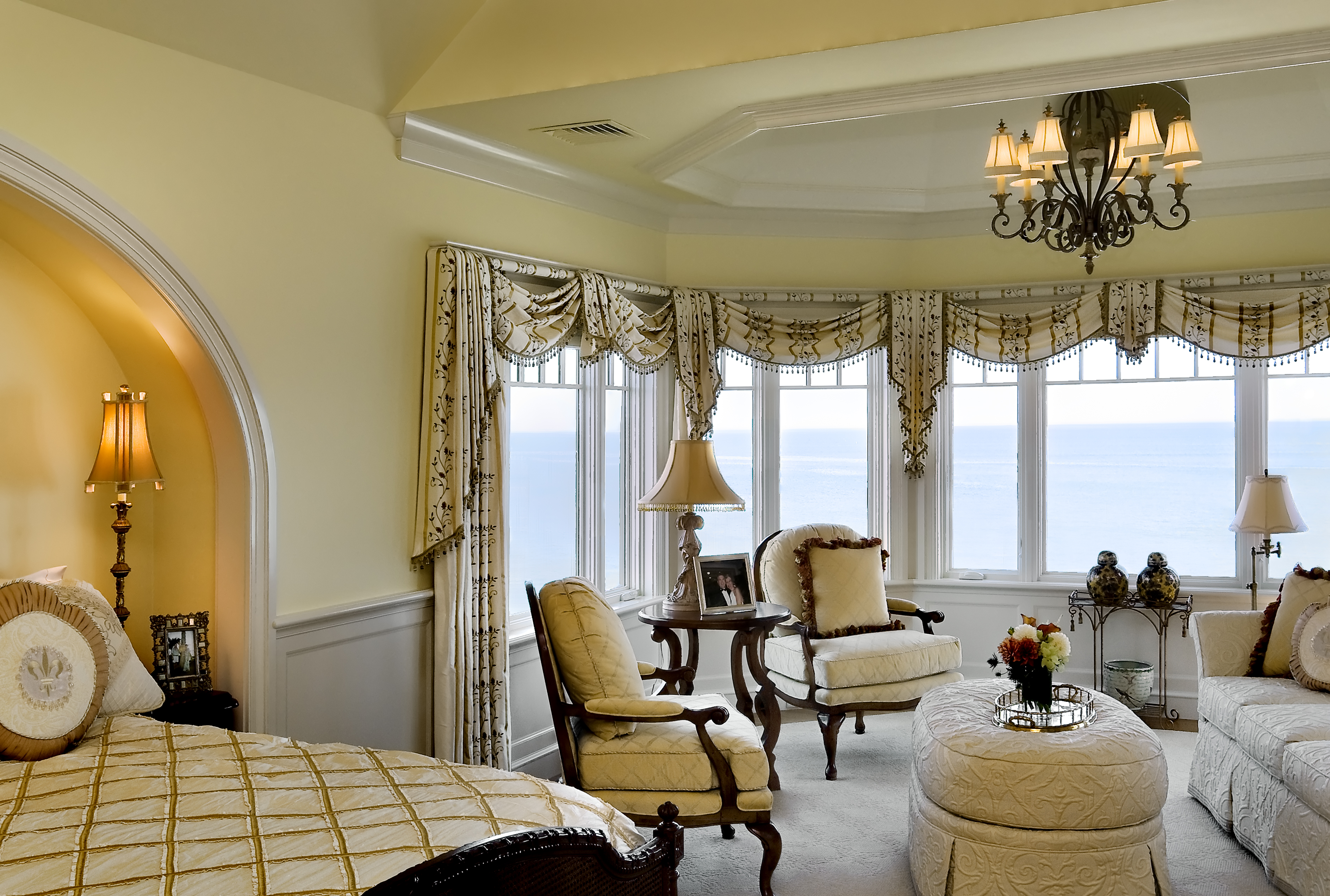
Design by TMS Architects
Interior design isn’t just about what goes into the space – colors, themes, shapes, pieces – but designing how the space itself will function on a daily basis. What are its practical needs? Its aesthetic wants? When considering any bedroom, the thought process often becomes stalled beyond “well, here’s a bed.” No one but those who live in the home will necessarily see those rooms; after a massive construction project or renovation, they become easy to overlook as sleeping spaces, a parenthesis. But again, they are where we begin and end every day, and we deserve to live within them beautifully.
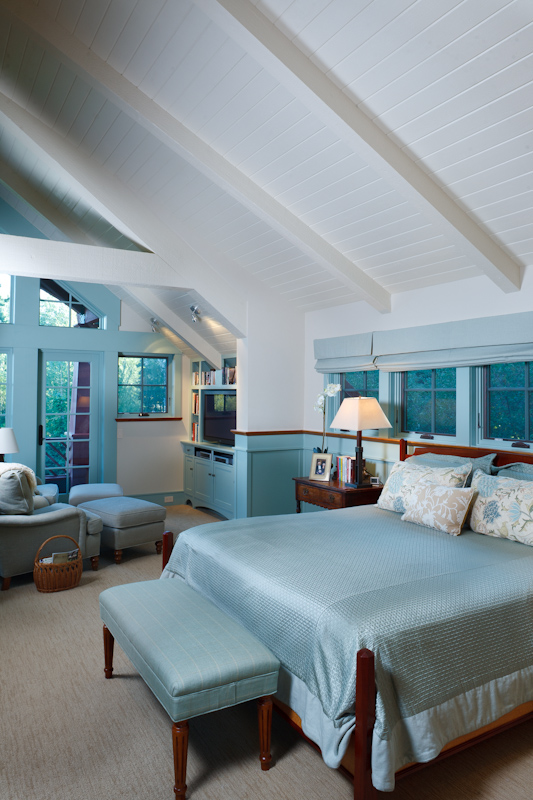
Design by TMS Architects
In many homes, the desire for this classic, sophisticated living space has sparked a tendency to build bedrooms with large footprints – but without the proper interior design’s support to develop the architectural structure’s full transformation into a real master suite. Instead, they become enormous, empty rooms with a bed and feeling of neglect. Bigger isn’t always better, and there’s little as hollow feeling as wasted space. Decide what else you truly want in your master suite besides the ability to sleep, and scale the room from there.
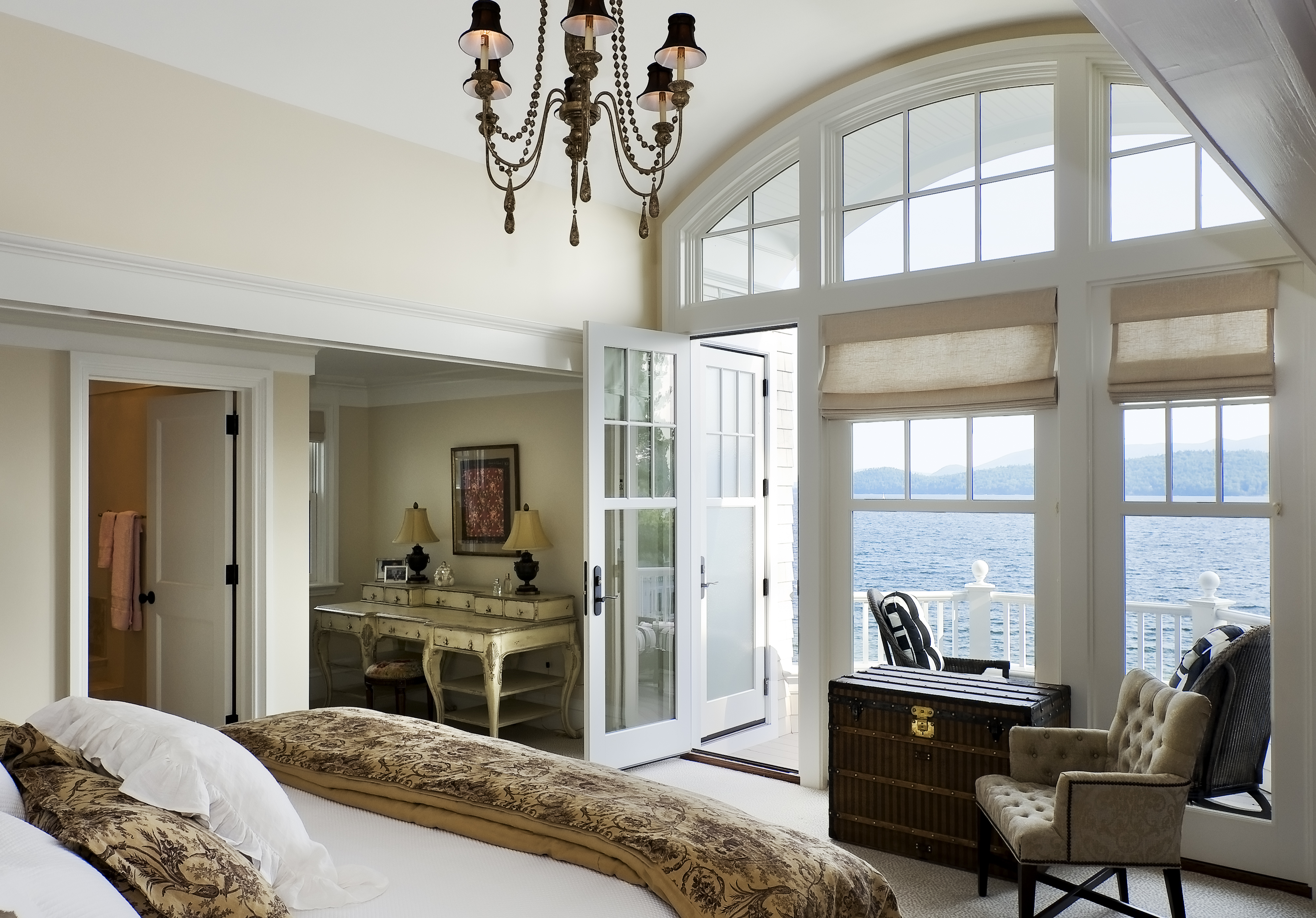
Design by TMS Architects
A true master suite exudes the feeling of luxury and grounded tranquility. While this can be enhanced by many elements of a design, the interior’s details and structure – from textiles to tiles to tones – is dependent on the experience made by the actual setup of the room. The master suite must feel like a home unto itself, a complete retreat from the world outside; including wild guests or whiny kids. But sanctuary is not made by a bed alone. Think of your personal tastes and loves, and develop from there: a desk for work, a sitting area for late night chats, a fireplace for early morning nesting. A library for cozy weekends, a wet bar for summer nights, a television for winter days. A master bath and walk-in closet have walls separating them from the larger suite, but the pleasure of these little areas is their presence within one space. Decide what makes this miniature oasis yours, and then plot a floor plan, deciding a layout with specific areas. Before jumping to the furniture, think about the precise wants of each zone – not just a desk, bookshelf, or armchair, but a place for lounging, a place for sleeping, and a place for each of you.

Design by TMS Architects
Much like bigger isn’t always better, smaller doesn’t always exclude a bedroom from being reborn a master suite – it simply requires more creativity. Homeowners with older, and therefore often more compact, homes generally and understandably ignore the entire concept of a master suite. But while an attached spa and a closet the size of Saks might be out of the question, a haven is not. Since multiple specific zones may be untenable while maintaining comfort, choose the elements you most want to accent and include in your room. To create as much floor space as possible, custom-built cabinetry and bookshelves take care of pragmatic needs, allowing for a greater sense of spaciousness and choice for the things you genuinely enjoy. To accentuate the space you do have, enlarge and highlight any windows, and gracefully include mirrors that aren’t just for vanity. Often, dedication to a seating area can become a zone that serves multiple purposes, while luxurious flooring and rugs enhance the space’s sensibilities, and a fireplace or television forms a strong focal point.
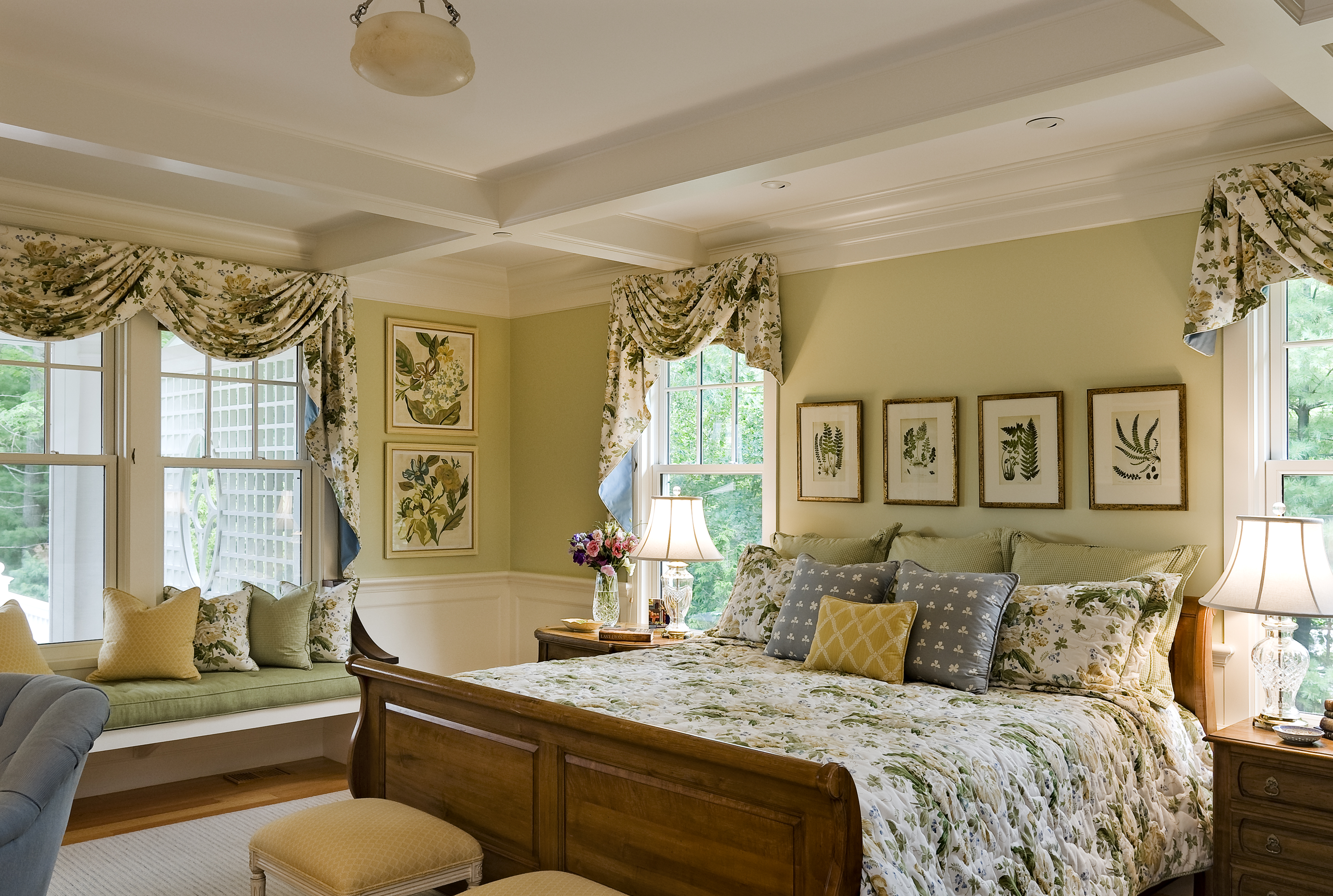
Design by TMS Architects
Just as choosing the size of a space to suit your wants and needs is crucial, furniture scale is paramount. A bed that’s too big becomes a boat crashing to shore, too small and it will be lost at sea within the room. The same thing goes for additional pieces throughout the zones of a suite – it shouldn’t become an office, with the bed as a practical afterthought. Similarly, as much as you may dream of an accent wall or trendy pattern, redirect instead towards a sense of timelessness. More than any space in a house, a master suite is about rest, and as such, it should maintain a sense of warmth and sensuous calm that isn’t overwhelmed by overly-designed visual noise. Center on personal touches and tastes – reflect the person who really lives there, and you’ll find yourself never wanting to leave.
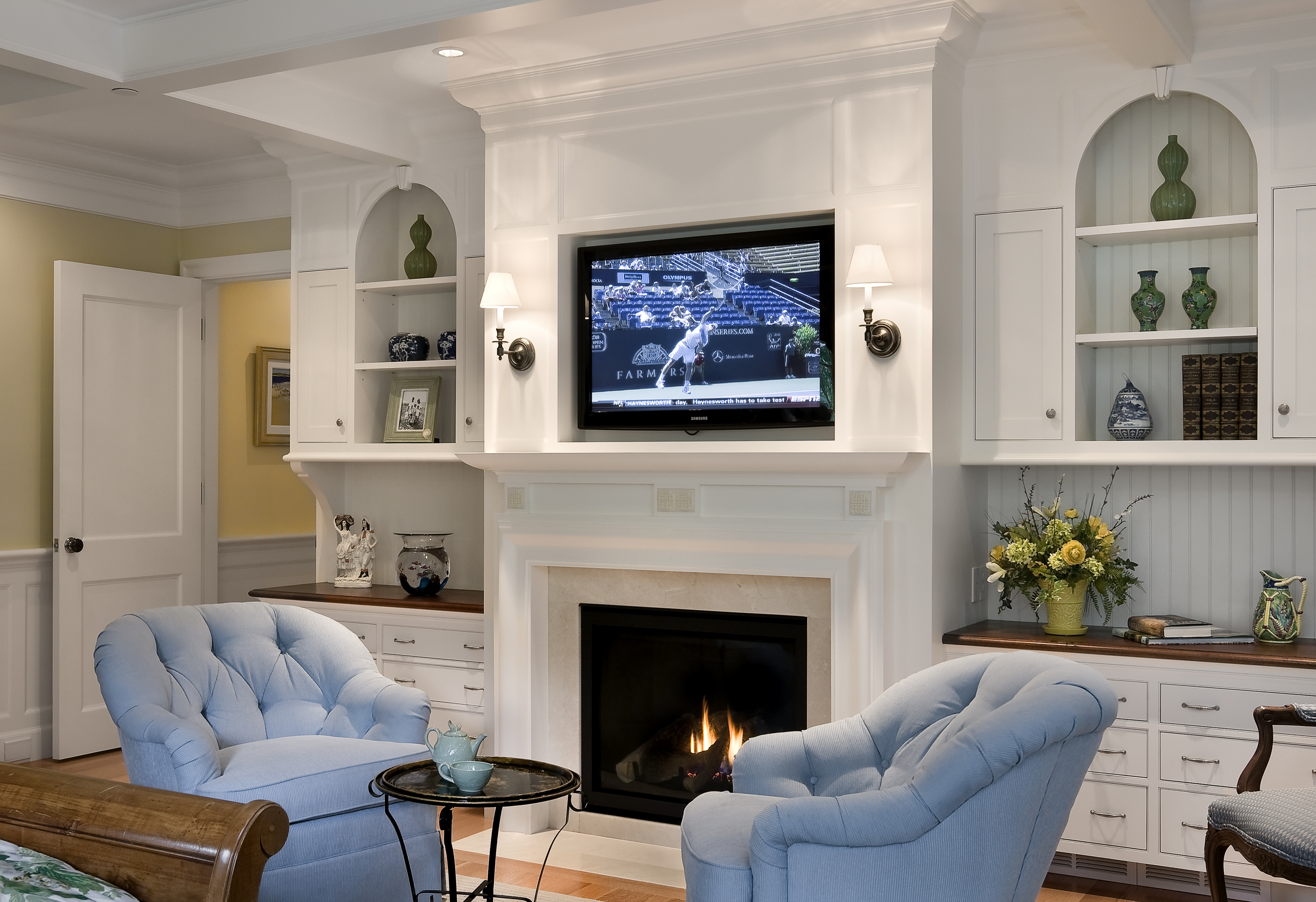
Design by TMS Architects
All spaces in your home serve endless functions. But more than any other, the purpose of your bedroom balances all those others – the many forms of resting and relaxing for all that is to come. By considering the many facets that such a place should contain for you, and dedicating a revitalized interior design towards them, your choices will turn a room for sleeping into the master suite of your dreams.
If your master bedroom — or any aspect of your home — could use some rejuvenation, contact us for a consultation.
